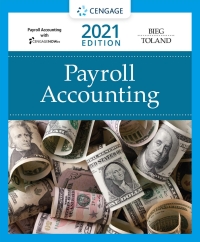Question
Suppose the economy of a primitive society has only three occupations, farming (F), manufacturing of tools (M), and weaving/sewing of clothes (C). This society has

Suppose the economy of a primitive society has only three occupations, farming (F), manufacturing of tools (M), and weaving/sewing of clothes (C). This society has no monetary system, so all goods and services are bartered. The table below summarizes how the barter system works. The farmers keep half of the produce for themselves and give one-fourth of the produce to the manufacturers and one-fourth to the clothiers. The manufacturers divide their goods evenly between the three groups, and the clothiers split things similarly to the farmers.
| F (giving) | M (giving) | C (giving) | |
| F (receiving) | 1/2 | 1/3 | 1/2 |
| M (receiving) | 1/4 | 1/3 | 1/4 |
| C (receiving) | 1/4 | 1/3 | 1/4 |
As the size of the tribe grows, bartering can become too inefficient, so the tribe wants to create a currency to make things run smoother. They need to set prices for the goods in the new currency which reflect the current relative value of the goods in the barter system. Let 1,2,3x1,x2,x3 represent the prices for the products produced by F, M, and P respectively. Then the first row of the table says that the value of goods received by the farmers is 121+132+12312x1+13x2+12x3, but since the trade is fair and the farmers produce goods worth 1x1 dollars, the first row of the table gives us the equation:
121+132+123=112x1+13x2+12x3=x1
Use the other rows to determine two more equations and give the corresponding augmented matrix.
Solve the resulting SLE. If we decide to value a unit of clothing at 3 dollars (i.e. 3=3x3=3) what are the prices for the remaining goods?
1=x1=
2=x2=
3=3
AutoSave OFF B of his SEE - cheggla Home Insert Draw Design Layout References Mailings Review View Tell me Share Comments Cover Page Get Aad ng w HHH Al- A A - Blank Page SmartArt In Chart 30 Modely Screenshot Talc Pictures Shapes Icons Media Links Comment Header Fapter 50 My Add-ins Wikipedia Page Break Page Number Text Box WordArt Croa Cap Equat an Advanced Symbol Suppose the faca trimit us anythree counts femine manufaturing af tools Mwinging of the This writy has no monetary systems as an: rices are bartcrcd. The table clow summariacs how the bar.er system work. The farmers ro half cf the produce for themselves and ghcore-fourth of the producc to the manufacturers and one fourth faces Thema erdve ter gely between the there and the other split this similarly to the mees Ficial Minvinci Calving Frecching! 1.2 1.3 1:2 Mireceiving 1:1 183 1/4 Creceiving 114 123 1/4 the ste of the tribe yuas bartering can become to nefficient. the tribe wants to create a currency to make things run smoother. They need to set prices for the goods in the new currency which reflect the current relative value of the goods in the barter system. Lexi, X), xrepresent the prices for the products produced by FM, and Frectlct. Then the nest row of the table says that the wake of yeste to the former + *2+ but since the trade is fast and the farmers prodek worth scholarstw first row of the table gives us the custom Use the other sto cetermine two more cuations and che the corresponding augmented matrix 12 1/3 12 214 2/3 1:4 0 1:3 -311 Question 3 Solic the resulting SLE. If we decide to valuc a unt of clothing at 3 collars. Xy = 3; what are the prices for the remaining zoccs X- Page 1 of 1 O words NE English (United States) Focus + 86%Step by Step Solution
There are 3 Steps involved in it
Step: 1

Get Instant Access to Expert-Tailored Solutions
See step-by-step solutions with expert insights and AI powered tools for academic success
Step: 2

Step: 3

Ace Your Homework with AI
Get the answers you need in no time with our AI-driven, step-by-step assistance
Get Started


